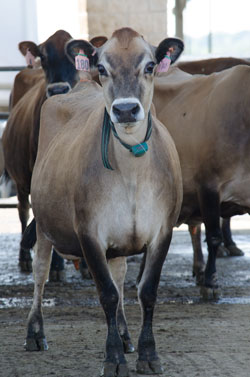 It's hard to see the good ones go, but culling is an inevitable part of having a dairy and an important herd management tool. For decades, the Dairy Herd Information Association (DHIA) has been collecting culling data from its participating herds. Its recently released 2013 data included results from 31,119 herds.
It's hard to see the good ones go, but culling is an inevitable part of having a dairy and an important herd management tool. For decades, the Dairy Herd Information Association (DHIA) has been collecting culling data from its participating herds. Its recently released 2013 data included results from 31,119 herds.According to the DHIA numbers, 63.7 percent of cows ended their lactation normally and stayed in the herd in 2013. Another 0.3 percent ended their lactation early due to abortion but stayed in the herd.
The remainder of the cows found themselves departing the farm for a variety of reasons. The top driver of culling identified by farmers? Low production. One-fifth of the cows (20.4 percent) culled in 2013 were sold for low milk yields.
Death ended the lactation for 16.3 percent of cows. Another 15.5 percent left due to reproduction problems. Mastitis or high somatic cell count led 12.8 percent out the door, while 4.7 percent left for locomotion problems. A small number of animals were reportedly culled for bad behavior, and even less than that left for undesirable conformation.
Another 3.4 percent of cows remained in production but were sold for dairy. The rest of the cows (30.2 percent) left the herd for reasons unspecified by the producer.
The data was also broken down by breed. Low production was the number one reason for culling for Holsteins, Jerseys and crossbreds. Reproduction topped the list for Ayrshires, Brown Swiss, Milking Shorthorns, and Red and Whites. Living up to their reputation, a smaller percent of Jerseys left for reproduction problems or locomotion issues than any other breed.
(c) Hoard's Dairyman Intel 2015
March 2, 2015








